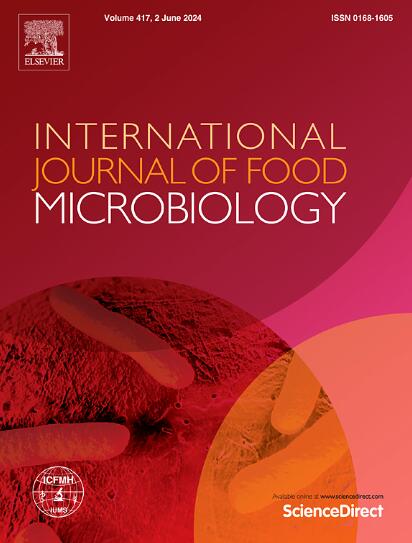The microbial terroir of the Greek olive varieties
IF 5
1区 农林科学
Q1 FOOD SCIENCE & TECHNOLOGY
International journal of food microbiology
Pub Date : 2025-07-01
DOI:10.1016/j.ijfoodmicro.2025.111332
引用次数: 0
Abstract
The microbial terroir of Greek olive varieties remains underexplored. In this study, 62 samples of olive fruits, collected across the harvest period 2019–2020, were analyzed by high-throughput sequencing. The samples represented 38 olive varieties collected from geographically well distributed regions of Greece. Analysis of the bacterial composition revealed that the geographical area was a significant factor in discriminating samples. The core microbiota included Erwinia, Pseudomonas, and members of the Enterobacteriaceae family. Furthermore, a notable variation in bacterial taxa abundances associated with the geographic location was observed. The sampling area was a key discriminant factor for the mycobiota, and the core mycobiota comprised Alternaria, Taphrina, Candida, Wickerhamomyces anomalus and Penicillium. Finally, Redundancy Analysis (RDA) revealed a notable association between environmental characteristics and microbial composition. Specifically, tree age was associated with certain bacterial and fungal taxa (Pearson's correlation p-value adj.[FDR] < 0.05).
希腊橄榄品种的微生物风土
希腊橄榄品种的微生物风土仍未被充分发掘。在这项研究中,通过高通量测序分析了2019-2020年采收期收集的62份橄榄果实样本。这些样本代表了从希腊地理分布良好的地区收集的38个橄榄品种。细菌组成分析表明,地理区域是区分样品的重要因素。核心微生物群包括欧文菌、假单胞菌和肠杆菌科成员。此外,细菌分类群丰度随地理位置的变化而显著变化。取样面积是真菌区系的关键判别因素,核心真菌区系包括互交菌、塔夫里纳菌、念珠菌、异常柳杉菌和青霉。最后,冗余分析(RDA)揭示了环境特征与微生物组成之间的显著相关性。具体而言,树龄与某些细菌和真菌分类群相关(Pearson’s correlation p-value .[FDR] <;0.05)。
本文章由计算机程序翻译,如有差异,请以英文原文为准。
求助全文
约1分钟内获得全文
求助全文
来源期刊
CiteScore
10.40
自引率
5.60%
发文量
322
审稿时长
65 days
期刊介绍:
The International Journal of Food Microbiology publishes papers dealing with all aspects of food microbiology. Articles must present information that is novel, has high impact and interest, and is of high scientific quality. They should provide scientific or technological advancement in the specific field of interest of the journal and enhance its strong international reputation. Preliminary or confirmatory results as well as contributions not strictly related to food microbiology will not be considered for publication.

 求助内容:
求助内容: 应助结果提醒方式:
应助结果提醒方式:


